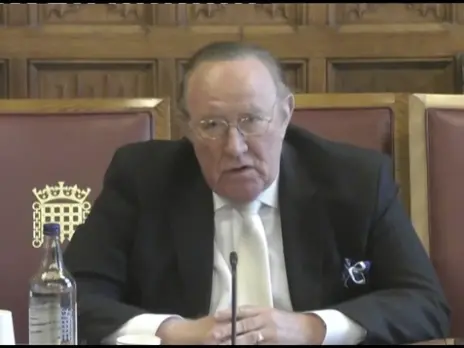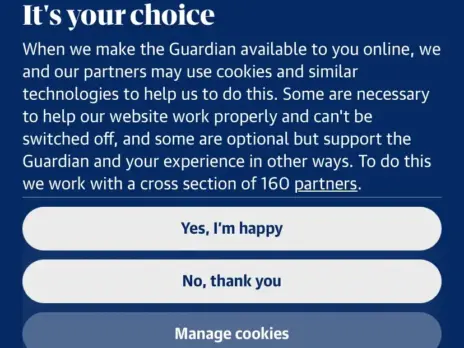
The time spent by young people watching live news programming from public service broadcasters has dropped by almost a third in five years, new Ofcom research has shown.
The average number of minutes that 16 to 24-year-olds spent watching news on BBC channels – including BBC News and BBC Parliament – ITV, Channel 4, Channel 5, STV in Scotland and S4C in Wales has fallen by 28 per cent since 2014.
But the overall decline across all age groups was much less pronounced, falling by five per cent over the same period from the start of 2014 to the end of 2018.
The new statistics were revealed in Ofcom’s new five-year review of the public service broadcasting sector, published yesterday.
Ofcom said that although PSB channels “remain an important source of trusted news”, there has been a drop in their trustworthiness rating from 67 per cent of viewers in 2014 to 60 per cent in 2019.
“However, attitudes to news can be affected by a complex range of factors,” the regulator added.
Although television is still the main way people access news in the UK, around two-thirds of adults now get their news online, Ofcom said.
It noted that although the BBC News website is the most-visited news website in the UK, just ahead of Mail Online, younger audiences “typically engage less” with it than older internet users.
When they do engage, it “tends to be on a fleeting basis via social media or aggregation services such as Apple News”.
PSBs’ innovations around online and on-demand content to try and meet audience expectations “have not yet fully made up for the loss of live broadcast viewers, particularly among younger people,” Ofcom said.
It added that its review “reinforces the need for an open and wide-ranging debate about the future of PSB to ensure audiences continue to enjoy a range of high-quality, original UK content including impartial news…”
Warning of the “challenges to the continued effectiveness” of PSBs, Ofcom said: “Live broadcast viewing is in decline, as viewers increasingly shift to global on-demand and online services.
“The connections which some audiences, particularly younger people, have traditionally had with PSB channels has diminished.
“The time is right to explore new ways in which PSB could be delivered, so that audiences and the wider UK economy continue to benefit.”
Ofcom has also published a five-year review into how Channel 4 is meeting its PSB obligations and praised the way it has connected with younger audiences.
It said it has “responded well” to the shift to social media for news by three-quarters of 16 to 24-year-olds and that the news and current affairs output is proving “very popular” online.
This includes the Unreported World Youtube channel and video clips from Channel 4 News on Twitter and Youtube.
But Ofcom said the shift to social media “brings with it reputational risks, given the fast-paced nature of online reporting” and appeared to refer to an incident which saw the broadcaster misquote Boris Johnson on immigration in a viral video posted on Twitter during December’s election campaign.
Channel 4 News has now introduced new social media guidelines, including on maintaining impartiality in all posts, and Ofcom said it would “continue to monitor C4C’s online news strategy, in particular to consider how well it improves levels of audience engagement”.
Ofcom also praised Channel 4’s news and current affairs TV output, saying it has an “increasingly important role to play in the UK’s changing news ecology”.
“Channel 4 News’ hour-long television bulletin each weekday, and the long running times of some of its current affairs programmes, enable stories to be covered in greater depth and give greater coverage of issues that appeal to minority interests as well as international stories,” it said.
“Such coverage can in part explain why the audience profile of C4C’s news skews significantly younger and more diverse than the news viewing to other public service channels.”
Ofcom said it had been told by audiences over the review period that they value the distinctiveness of Channel 4’s news and current affairs output, that they see it as covering news stories from different angles than the other PSBs with a “strong investigative edge” and without shying away from tough topics.
Although Channel 4 News’ TV viewing figures dropped by 11 per cent year-on-year to an average of 566,000 viewers per programme in 2018, this was partly blamed on “Brexit fatigue” and the numbers went up again in 2019, according to Ofcom.
But its 16 to 34-year-old TV audience fell even harder by 19 per cent year-on-year to an average of 68,000 viewers.
The regulator said: “Several factors help explain this decline in linear performance, including the migration of news consumption online.
“However, given the importance that Channel 4’s flagship evening news bulletin plays in serving a young and diverse audience with in-depth news and analysis, it will be important that C4C takes steps to safeguard its TV provision.”
Picture: Pixabay
Email pged@pressgazette.co.uk to point out mistakes, provide story tips or send in a letter for publication on our "Letters Page" blog






